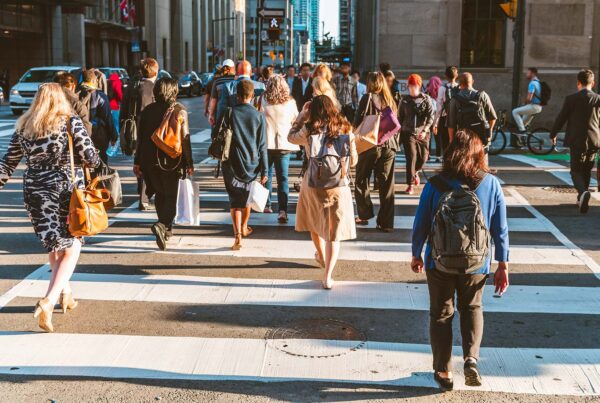A group of Latin dance icons known collectively as SoulM8s on Facebook recently featured a Zoom session in which they talked about what we learned through the pandemic, and how dancing might change going forward. The group, made up of Allan Tornsberg, Vibeke Toft, Bryan Watson, Carmen, Hans Galke and Bianka Schreiber, made some interesting observations.
A key point was that before all this shutdown happened, we were so entrenched in the existing patterns of how things worked that we were like hamsters running on a wheel. For competitors, that wheel was the process of continuing an ineffective partnership just because the next competition was around the corner, or applying a certain style because you were comfortable there, or living your dance lifestyle a certain way because it was just how you did everything day to day. Suddenly that routine hit a brick wall. It was an opportunity to reset.
This reset doesn’t just apply to our dance activity but potentially to any area of life, from extracurricular activities to work to relationships to sleep to how we fuel our bodies. It could — and we hope it will — apply to some of the things that were going on in the world of dance. Many professionals have been frustrated by certain trends in ballroom and latin dances. With this reset, we can evaluate and rethink those trends. Are they good or bad? If so, why?
Can we do things differently? How can we make things better? Good questions, and hopefully there will be an effort to improve dance as we get back to normal life. During the session, Bianka and Carmen mentioned the role of women in the partnership and hoped that as we move forward they can better embrace their role as artists, free from having to think about the timing and choreography so that they can express themselves more powerfully.
Can we do things differently? How can we make things better? Good questions, and hopefully there will be an effort to improve dance as we get back to normal life.
In many countries where lockdowns have been extended, including Canada, people will have to ease back into dance. After more than a year with virtually no dance activity, even experienced dancers will need to retrain the muscles used so that they are capable of responding to the unique stresses of dance movement. Teachers will need to be prepared for the inevitable back pain and other physical challenges as the body learns once again what it feels like to stand for many hours at a time. I know that for myself, despite almost daily efforts at high intensity as a cyclist during this past year and a half, dance will require completely different muscles that haven’t been used much since the start of 2020. It will take time for my body to adapt.
We’ve been blessed to work with some students who have allowed this time to reset their own understanding of basic dance figures, taking regular private lessons where they can work on figures without being distracted by regular practice, social dance, or competition. They got off the hamster wheel and have made huge progress.
Wendy and I have used much of this time to study technique and get more granular with details that we didn’t have time to explore in the past. I’ve also used it to read some books that I previously didn’t have time to study.
What about you? Have you got goals that you thought of achieving but didn’t because you were busy running on the hamster wheel of life? Are there areas of dance that you would like to do differently? Are there new dances you would like to explore, or have you always toyed with the idea of competition but never took the plunge? Maybe this will be the time to reset with those dreams in mind. Use this opportunity to rebuild your own future the way you want it to look.
The world is still months away from business as usual, and chances are good that we will never be back completely to what we used to think of as normal. But we can see the light at the end of the tunnel, and it’s positive.
We are already seeing people yearning for human contact and we know that partner dancing will become more popular than ever, at least in the short term. We’ve received more emails in the past few weeks from people who want to learn to dance than we had received in years prior to the pandemic. The next year should be a positive one for dance studios, dancers, and competition organizers.
But as we get back to ballroom dancing, our hope is that we as a community try to do so in a way that resets the things we were troubled by so that we don’t repeat mistakes. We’d like to see partner dancing return to an appreciation of the partnership, rather than the solo showboating that was increasingly apparent the past few years. We’d like to see women embrace a confident appreciation of their role as performance artists. We’d like to see better communication between the partners during performances. We’d like to see a return to musicality in competition.
You can view the session here: https://www.facebook.com/SoulM8s6/videos/1882044485300945














